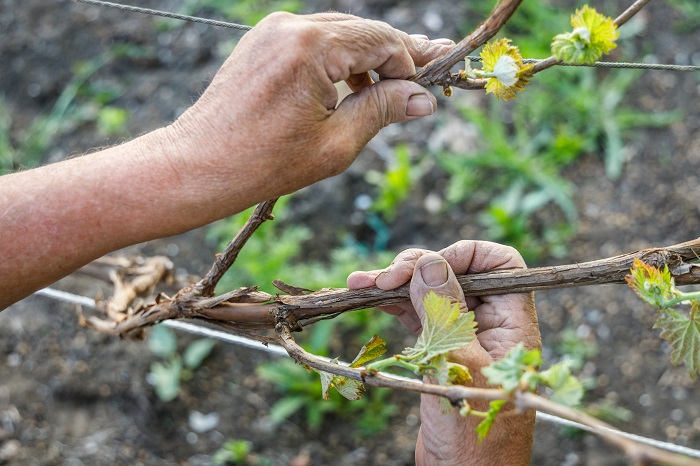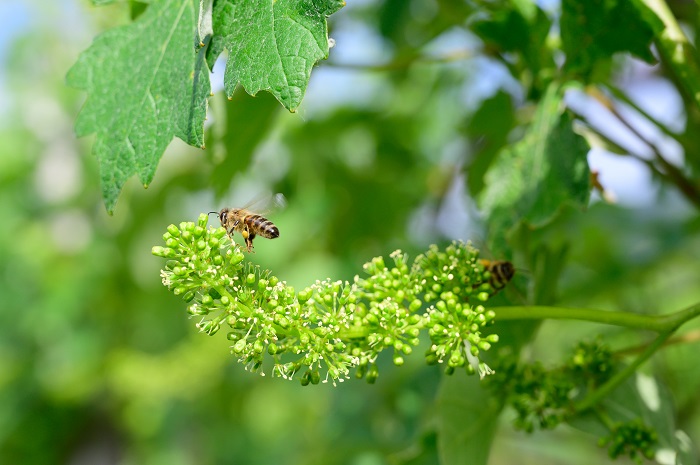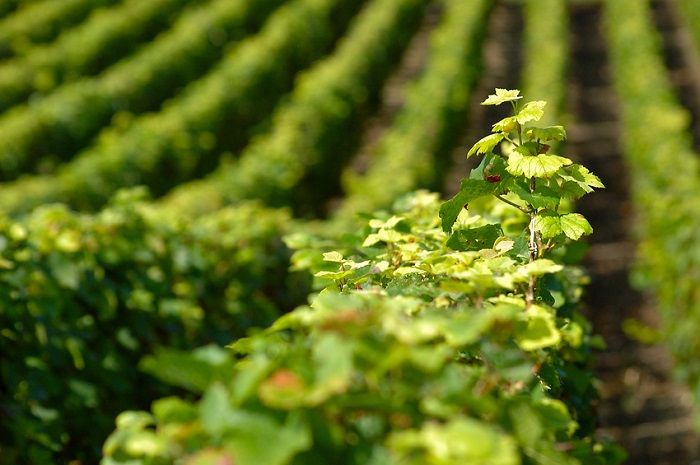
Throughout the year, the vines’ growth cycle dictates a series of crucial tasks for the winegrower in the vineyard. As the seasons progress, the vines gently emerge from their winter dormancy and go through different stages, from budburst to flowering, fruit set, veraison, and finally grape ripening. Here’s a closer look at spring, when nature reawakens, and a new vegetative cycle begins in the vineyard. We have written the months for both the northern and southern hemispheres, respectively.
March/September: ‘Prune early, prune late, nothing beats pruning in March,’ as the French saying goes. Pruning, which begins as early as mid-December, continues through to March in Europe. This would be the equivalent of starting in mid-June and going until September in the southern hemisphere As soil temperatures warm, sap begins coursing through vines unfolding a sequence of events that eventually results in the appearance of fruit on the vines. In March/September, as the weather gets warmer, the first buds start to appear producing shoots. Dotted along the canes, they have a downy, cotton-like protective cover and swell before bursting. This process is known as budburst or bud break.
As climate change disrupts traditional weather patterns, winegrowers have been forced to find new methods to combat late frosts, which now occur when the vines have already started their new growth cycle. With rising temperatures advancing the vine’s vegetative cycle, techniques such as late or double pruning are now employed to delay budburst. Indeed, vines are budding earlier than ever, which becomes a serious concern when spring frosts strike, threatening to ‘scorch’ the delicate young buds. Late frosts have always existed and been a challenge, regardless of climate change. The real issue is early budburst, which makes the young buts far more vulnerable when these frosts occur.
April/October: As spring progresses, the vines continue to awaken, and budburst advances: buds unfurl, tiny leaves emerge, and both shoots and foliage begin to grow as sap starts flowing through the plant once more. With pruning complete, winegrowers move on to training the vines along wires, securing the shoots horizontally to maintain structure – a process known as tying down or fastening.
Next comes the time for trimming, during which winegrowers can resort to either tipping or topping. Tipping involves removing the shoot tips, stimulating lateral growth and increased vigour, while topping entails cutting back shoots by 30–50 cm to control excessive vigour. This also helps keep the vines upright, making it easier for tractors to pass between the rows. Tipping and topping also encourage the growth of secondary shoots at the base of the leaves, increasing the canopy surface area available for photosynthesis, ultimately stimulating sugar production in the grapes.

May/November: In the middle of spring, flowering begins marked by the appearance of delicate blossoms. As they bloom, the flowers lose their first flower caps and then turn into bunches of fruit. This is called the fruit set. Now is the time for tilling and shallow ploughing between the rows of vines. Turning the earth not only aerates the soil but also fosters the growth of natural micro-organisms and avoids the proliferation of weeds. An increasingly pressing question for winegrowers here is whether to practise tilling or grass cover cropping. This is also the time to start spraying the vines to protect them from diseases and parasites. Depending on the pruning method used and the growing conditions, additional buds – beyond those intentionally left during pruning – may develop on certain parts of the vine stocks. Emerging from the trunk or lower part of the stump, these non-fruit-bearing shoots (also referred to as ‘suckers’ by winegrowers) are removed so they don’t consume the vine’s sap through a process known as desuckering.
As summer approaches, it’s time to let the fruit set start to swell. The winegrower’s work will shift to a variety of tasks ensuring the vines thrive through the warmer months.




